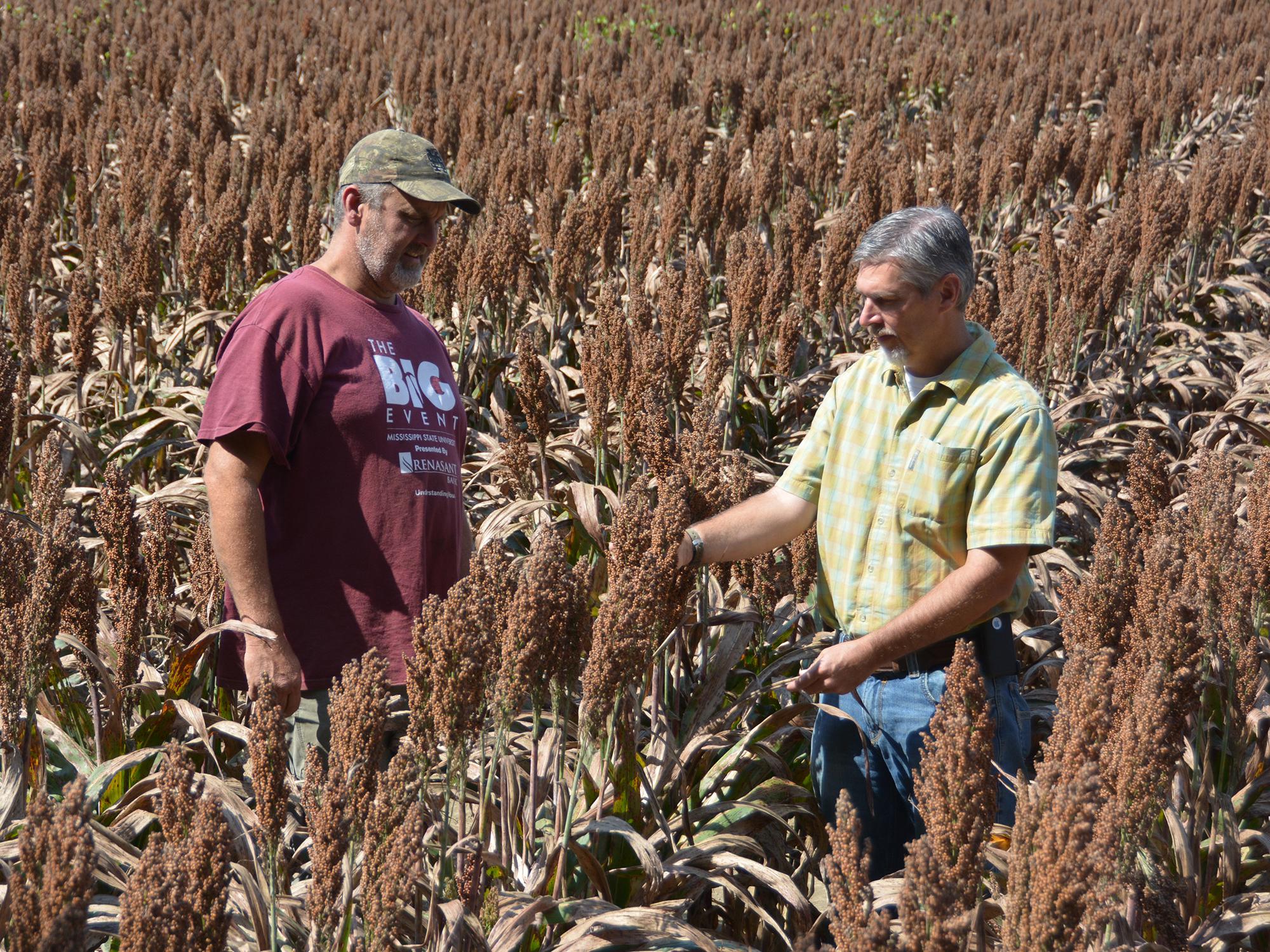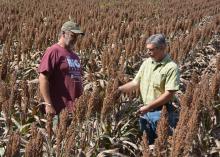Information Possibly Outdated
The information presented on this page was originally released on September 25, 2015. It may not be outdated, but please search our site for more current information. If you plan to quote or reference this information in a publication, please check with the Extension specialist or author before proceeding.
Grain sorghum growers practice lessons learned
STARKVILLE, Miss. -- After causing significant challenges in 2014, sugarcane aphids did not catch Mississippi’s grain sorghum growers by surprise this year.
“We are not sure if sugarcane aphids were not as bad as last year or if we just did a better job using insecticidal seed treatments,” said Angus Catchot, an entomologist with the Mississippi State University Extension Service. “One big difference was that we were more educated in our control efforts. No one was caught by surprise, and everyone had budgeted for control.”
Catchot said 70 percent of the state’s grain sorghum acres were planted in pretreated seed last year. In 2015, the percentage was closer to 100.
“Insecticidal seed treatments give us 40 to 50 days of control after planting. After that wore off, we had to treat much like last year,” he said.
Catchot said growers saw more sorghum midges than normal. If not for sugarcane aphids, the midge would have been fairly easy to control. The pyrethroids that control midges also remove some of the beneficial insects that help control aphids.
“We only wanted to apply as needed to avoid flaring sugarcane aphid populations,” he said.
Erick Larson, an associate Extension and research professor at MSU, said the state’s ability to produce strong yields last year and favorable prices last spring influenced growers to maintain their faith in grain sorghum.
“We have had strong yields in recent years. Even last year, in spite of sugarcane aphids, most yields surpassed the benchmark level of 100 bushels per acre,” Larson said. “The weather was very favorable for nearly all our summer crops last year.”
The agronomist said an extremely wet 2015 planting season challenged nearly all of Mississippi’s row crops. After planting, high temperatures during July caused considerable heat stress on crops across the state, including more than 90,000 acres of grain sorghum.
“We would not have expected acreage to remain steady after last year’s sugarcane aphid pressure, but prices were so good, growers could not resist,” Larson said.
Brian Williams, an agricultural economist with the MSU Extension Service, said sorghum and corn compete for farmers’ interest. Historically, sorghum prices are lower than corn prices, but that has not been the case lately.
“Corn and sorghum prices are below recent year averages, but sorghum is higher than it was at this time last year,” he said. “We are expecting this to change, and corn to rise above sorghum sometime in the next year or so.”
On Sept. 24, sorghum was $3.98 per bushel in Mississippi, and cash corn was $3.78 per bushel, Williams said. The cost of production for sorghum is typically lower than for corn.
The economist said prices reflect demand as the export market, and China in particular, has favored sorghum for feed.




